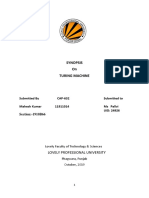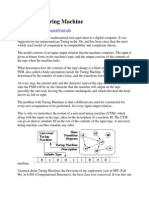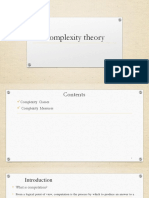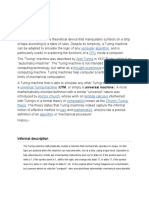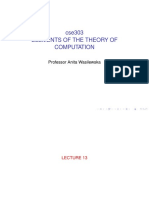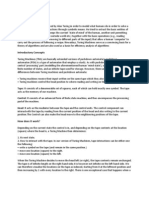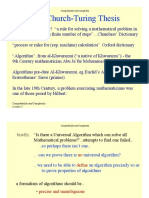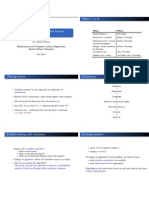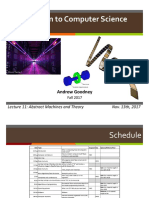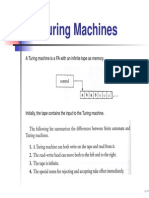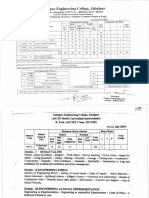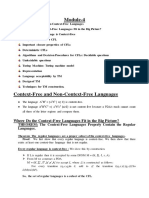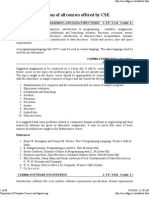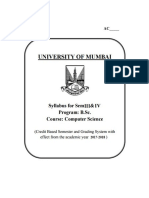0% found this document useful (0 votes)
36 views10 pagesTuring Machine
A Turing machine is a theoretical model introduced by Alan Turing in 1936 that manipulates symbols on a tape according to a set of rules, serving as a fundamental concept in computation and algorithms. It consists of a tape, a read/write head, and a set of states, and can simulate any algorithm, reflecting the Church-Turing thesis. Despite their theoretical power, Turing machines have limitations in efficiency and practicality, and they play a crucial role in computability theory and the analysis of algorithms.
Uploaded by
ABU BAKERCopyright
© © All Rights Reserved
We take content rights seriously. If you suspect this is your content, claim it here.
Available Formats
Download as PDF, TXT or read online on Scribd
0% found this document useful (0 votes)
36 views10 pagesTuring Machine
A Turing machine is a theoretical model introduced by Alan Turing in 1936 that manipulates symbols on a tape according to a set of rules, serving as a fundamental concept in computation and algorithms. It consists of a tape, a read/write head, and a set of states, and can simulate any algorithm, reflecting the Church-Turing thesis. Despite their theoretical power, Turing machines have limitations in efficiency and practicality, and they play a crucial role in computability theory and the analysis of algorithms.
Uploaded by
ABU BAKERCopyright
© © All Rights Reserved
We take content rights seriously. If you suspect this is your content, claim it here.
Available Formats
Download as PDF, TXT or read online on Scribd
/ 10


















